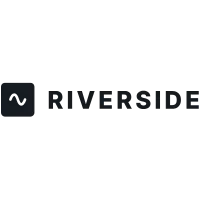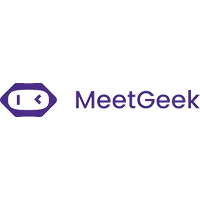
Best Transcription Software
What is a Transcription Software?
Transcription is the process of putting spoken words, music, and other speech sounds into written or printed form. It can make it easier to manage your content and watch your videos.
Transcription software automatically converts audio from interviews, chats, dictations, and video recordings into text. Many audio and video transcription software have embedded innovative technologies such as natural language processing (NLP), deep learning, and machine learning to transcribe voice in their backends. However, some use a human-in-the-loop (HITL) model to ensure transcription accuracy.
Transcription software lets users upload audio files and transcribe speech that is spoken directly into the program. Tools for transcription may also have features like API integration, collaborative editing, and analytics reports on the speed and accuracy of the transcription. Users may also be able to add live transcription to video footage with these tools.
Transcription software offers an easy-to-use and efficient standalone platform for speech transcription, also known as speech-to-text (STT) software. For any tool to be counted in the best transcription software category, it must have the following features:
- Offer a framework for automatic audio transcription.
- Upload audio for transcription to the platform.
- Use machine learning or natural language processing to transcribe text.
- Use a text editor to facilitate the revision of the transcription.
Compare Transcription Software
Riverside
Table of Contents
Why use Transcription Software?
Transcription software allows organizations to function efficiently and intelligently. This software helps improve productivity by making better use of time and expenses and increasing the return on investment.
-
Focus on what matters
Best transcription software can help you concentrate on what matters most by reducing the time you spend transcribing. You can use software to do the majority of the job for you rather than spending hours manually transcribing a recording, allowing you to concentrate on other crucial responsibilities.
-
Increased accuracy
With sophisticated algorithms and machine learning technology, voice transaction software is designed to recognize and transcribe even the most difficult-to-understand speech. This can ensure that your transcriptions are accurate and error-free, saving you time and preventing errors.
-
Improved efficiency
With the help of audio transcription software, you can increase your overall productivity. This software helps you automate several manual transcription tasks. This way, you can prioritize and complete other essential tasks. Increasing your efficiency with this program allows you to finish time-consuming tasks faster and free up more of your day.
-
Easily amendable
You can easily edit and modify your transcriptions using speech-to-text software, giving you more control over the final product. The software allows you to go back, preview, and make changes, and you don’t have to begin everything from scratch. This scenario is beneficial if you want to edit or revise your work.
Who can use Transcription Software?
Transcription software is beneficial for people working in different positions in different companies. Here are some posts on who can get the best out of this software:
Journalists: Transcription software can assist journalists in quickly and accurately transcribing interviews, allowing them to focus on writing their stories.
Researchers: Transcription software can help researchers transcribe interviews, focus groups, and other data collection methods, making it easier to analyze and get conclusions from the data.
Lawyers: Transcription software can assist lawyers in transcribing depositions, hearings, and other legal proceedings, allowing them to review and reference important information more easily.
Content Creators: Content creators, like YouTubers or podcasters, can benefit from transcription software by getting accurate transcripts of their videos or audio files, which can be used for captions or as a source of information.
Students: Those who use transcription software can better understand the material and refine their study techniques by transcribing lectures, interviews, and other research materials.
Key features of a Transcription Software
The features of transcription software can vary depending on d program, but some of the most common features are mentioned below:
Audio and video playback controls: A transcription software must allow you to transcribe at your own pace by allowing you to play, pause, rewind, and fast-forward audio or video recordings.
Speech-to-text recognition: The software should have speech-to-text technology to turn an audio or video recording into text. This software will save you time and effort when you must transcribe something.
Text editor: The software should have a text editor that allows you to edit and format the text as needed, including adding time stamps, speaker identification, and other relevant information.
Customizable hotkeys: These can help you speed up the transcription process by quickly performing everyday actions, such as playing or pausing the audio or video, without needing a mouse.
Automatic time-stamping: The software should have an automatic time-stamping feature that can mark specific points in the audio or video recording, making it easier to review and reference important information.
Supporting multiple file formats: To transcribe recordings from diverse sources, you must choose a transcription software that supports different audio file formats, such as MP3, WAV, and MP4.
Cloud storage: Some transcription software allows you to store your transcriptions in the cloud, providing easy access and backup options for your work.
Collaboration tools: Some transcription software allows for collaboration, making sharing and editing transcriptions with others easier.
Main benefits of using a Transcription Software
Any software that helps eliminate extra work and saves time is ideal; transcription software is one such platform. This is highly beneficial whether you want to convert your audio files to text for podcasts, journalism, vlogging, or others.
Here is how you will get the benefits of audio-to-text transcription software:
-
Help search engines crawl your content
If you’re into vlogging and don’t offer subtitles for your videos, you’re taking advantage of a great chance to reach a wider audience. Your discoverability will increase if you transcribe the audio from your video into text so that YouTube and other search engines can crawl the keywords.
-
Reach broad audience
Because the world is full of people with diverse tastes and preferences, an audience prefers reading to watching a video. Aim your promotional activities specifically at your desired audience and increase the effectiveness of your strategy by transforming sound into written words.
-
Boost accessibility of content
This is a completely win-win situation. Persons with auditory issues can gain a great advantage from having the option of a written transcript of an audio or video. Today’s smartphones and other devices include accessibility tools for the same purpose, so there’s no reason not to use them.
-
Accessible to the distribution of the content
The availability of text-based distribution channels far outnumbers those of audio-based ones, and the lower bandwidth requirement of text makes it an even more desirable option. Suppose you have a podcast, journalism audio, instructional video, or other audio. In that case, you can convert it to text and distribute it in eBooks, online articles, emails, manuals, white papers, etc.
Different types of Transcription
There are three ways to transcribe your meeting, videos and audio files. These include:
-
Transcription by hand
This traditional transcription method entails typing words while listening to audio/video files. Although time-consuming and tiring, many people prefer it because it does not cost you a penny.
-
Transcription services for humans
Several companies offer human transcription services, which usually take longer and cost more. Compared to software that does automatic transcription, these are accurate.
A team of transcribers uses technology to turn speech into text as part of a human transcription service. Human transcribers can be less accurate in a live meeting or event because only a few people can type in almost real-time. There are better or most efficient ways to turn real-time speech or video into text than human transcription services. Plus, the price was higher.
-
Automated transcription
Automatic transcription is rapid and precise. A 30-minute multimedia file typically takes less than 5 minutes to be automatically transcribed by Zoom or any other online automated transcription service. On the other hand, human transcription typically takes a week to 24 hours.
Security is a definite advantage of audio transcription software. Free automated transcription software follows strict security protocols, and this is done to protect the confidentiality and security of clients’ information.
Using audio-to-text transcription software to transcribe audio or video files ensures the transcript is not distributed to anyone. This implies that you have complete control over who among the participants sees the transcription.
There are numerous benefits to using automated transcription software over professional transcription services.
Which Transcription Software is ideal for you?
Manually transcribing audio and video content into text or paying freelance transcribers for the same is no longer needed. You can get an overview of the top transcription tools in 2023 by reading this roundup of transcription software.
Consider the following factors when selecting voice transcription software:
Budget: Determine whether you are looking for a free tool or are willing to pay for a more advanced tool with extra features and better results.
Purpose: Consider the primary purpose of your transcription work, whether transcribing a meeting or podcast, subtitling a video, or something else. Choose a program that is personally designed to meet your specific needs.
Speakers, accents, and languages: If you require transcription of recordings with multiple speakers, various articulations, or different languages, make sure the software you choose can support these features.
Accuracy: The accuracy of transcription software can vary. Look for a tool that combines AI-powered automatic transcription with human editors for the best results.
Turnaround times: If you require fast turnaround times, consider a tool that uses automatic transcription rather than human transcribers. Some tools can work up to five times faster than human transcribers but may sacrifice some accuracy.
Price guide for a Transcription Software
Many transcription companies bill by the minute. A 30-minute transcription, for instance, would cost $30 at a rate of $1 per minute. Costs can quickly add up, and some services charge extra for a quicker turnaround time, verbatim files (which include all “ums” and “ahs”), or if the audio quality is subpar. The best value for you may be a subscription-based service if you frequently transcribe audio and video files.
As you might expect, a file’s length typically affects its processing time, and automated services can process a file in a few minutes. A higher price may be required for faster delivery times with human-powered services.





















